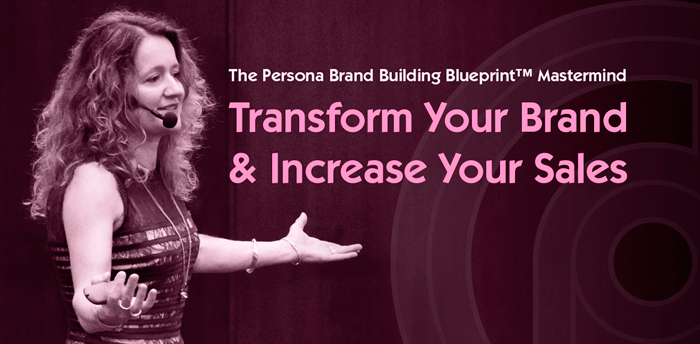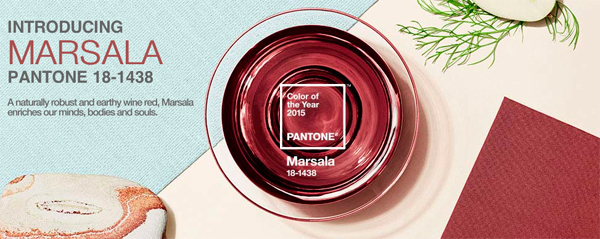Brand Profiling: How Brand Performance and Purpose Are Inextricably Linked
Ask the people in any room for a show of hands for who leaves the house to go shopping for unheard of brands in nondescript shops. No hands will go up. Wishy washy products and unremarkable, generic services certainly don’t motivate anyone. However, instantly recognizable market leaders, famous brands, cults and classics pack in plenty of appeal by projecting a purpose that’s engaging and compelling for both employees and customers alike.
Purpose Equals Purchase
“Consumers choose the brands that engage them on their passions and interests 42 percent more often than they do those that simply urge them to buy the product being advertised,” according to a 2014 report by Think with Google, undertaken in partnership with TNS and Ogilvy. Interviews with purchasers of auto vehicles, beauty products and smartphones indicates that, more than ever,
Purpose = Purchase.
Profit is Not Brand Purpose
The sole intention, or purpose of a business, is not, and cannot be, just to make money. Rather, profit is a consequence of doing business. In 2000, Peter Drucker, the father of modern management theory, shared his thoughts on this topic as mentor to the former chairman of Procter & Gamble, “The purpose of a company is to create a customer” and “A business….is defined by the want the customer satisfies when he or she buys a product or a service. To satisfy the customer is the mission and purpose of every business.”[1]

Image via www.gapingvoidart.com, ©Hugh MacLeod
What Does Your Brand Stand For…And Upon?
One cannot over emphasize the importance of building a strong base as a platform for a brand, using the following key elements as bricks in its foundation:
- vision
- mission
- values
- purpose
- promise
- positioning
- architecture/hierarchy structure
- story
- personality
- corporate social responsibility
When working with our private clients or indeed delivering our open branding masterclasses and workshops we use the Personality Profile Performer™ System to develop all these key brand foundational elements for our clients’ or workshop participant’s brands. The outputs from the Personality Profile Performer™ then provide you with your brand blueprint or brand roadmap, together with the brand direction for your brand design application in brand collateral, brand communications strategy, training and so forth.
Notice that purpose is one of the key building blocks for a strong brand foundation. This part of the brand foundation provides the critical direction for brand strategy, and consequently, for high performance with the laser-focused results marketers seek. Here we aim to show you how a well-defined brand purpose is inextricably tied to stronger brand performance.
Defining Brand Purpose
Since some employees and employers may say that the purpose of a business it to make a profit, it’s understandable that thought leaders must reiterate the actual meaning of brand purpose.
So, what is brand purpose and what is it not? Drucker and other experts observed that brand purpose is to create customers through superior products and services which have value and usefulness. In other words, customers do not shop and pay so that a company can become richer. They buy because they perceive value in their purchases.
It’s important to note that 60% of branding is about perceived value and only 40% about the actual product or service, so how you communicate your brand’s mission, vision and purpose actually has a significant impact on your bottom line.
To quote Simon Sinek “People don’t buy what you do, they buy ‘why’ you do it, and what you do simply proves what you believe.”
Branding expert David Aaker writes about value that inspires purchase from both sides of the buy/sell relationship. “It is easy to get caught in a focus on financials, but employees and customers are increasingly attracted to brands and firms that have a higher purpose.”[2]
This is why, for example, at their very foundation of purpose, Volvo family cars are built around a steel cage design to achieve maximum safety, Mercedes-Benz defines meticulous German engineering and innovation in luxury cars, and Tesla produces electric cars to decrease our dependency on gasoline. Purpose is also why one of the most successful brands on earth doesn’t just sell computers, but dreams up groundbreaking products such as the Apple Watch, iPads and iPods to create “insanely great products” that enhance peoples’ lives and that many people consequently want…a lot.
How Clear Brand Purpose Improves Performance
Brand educator Mark Di Somma counsels that marketers should view the relationship between purpose and product as a symbiotic one, not as an either/or one.[3] “For purpose to realize its full potential, the commercial leadership must align with, and be framed by, a clear and shared moral leadership.”[4]
When brands are able to connect and balance great storytelling founded on a clear vision, mission, values, and purpose, with the right product or service, then the magic happens. We look into three case studies from Coca-Cola, Wal-Mart Stores and Patagonia.
Case Study 1: How Coca-Cola Made History Selling Togetherness
Who remembers the tune, “I’d like to buy the world a Coke and keep it company”? It was 1971 when McCann-Erickson’s creative and music directors first produced those lyrics[5], placed a group of Coke bottle-holding, flowers-in-the-hair, multicultural lip-syncing teenagers on top of a hill outside Rome and portrayed a positive message of sharing, hope and love. The world said “Wow!”
One of the most successful adverts of all time, now enshrined in the National Museum of American History at the Smithsonian Institution[6], married the idea of happiness and universal love with the product. In a ground-breaking collaboration between advertising and the record industry, it was re-envisioned as a hit song rising to UK #1, as a Christmas advert and as a Disney collaboration for years to come.
Case Study 2: How Wal-Mart is Re-Thinking Purpose
In America, Walmart has been reportedly criticized, rightly or wrongly for years, one issue after another. Non-union jobs at low wages that depress the job market, running small businesses out of town, accusations of racial and gender employee discrimination, foreign product sourcing, and environmental policies are a few of the themes that have splashed across the pages of various news publications and media.
America’s largest retailer is also America’s largest employer. Wal-Mart Stores has also created America’s richest family with a fortune placed at US $149 billion.[7] Yes, they have low prices in 5,000 stores. But, it’s fair to ask: What’s their brand purpose? What do they stand for?

Image via Wikipedia CC 4.0, Credit: Miosotis Jade
In keeping with the growing trend in other parts of the world, American consumers’ sense of values have become more focused on where products come from, how they are made, whether a company is doing the right thing for the environment, for sustainability, for its workers and for corporate citizenship, says Allen Adamson, North American chairman at Landor Associates in AdWeek.[8]
Since mid-2015, AdWeek reports Walmart is starting to turn things around by embracing brand purpose. Examples include partnering with actor and gender-equality activist Geena Davis for a hometown theater festival in Arkansas, speaking out against anti-gay legislation, raising hourly salaries above federal minimum wage, and adopting “five freedoms of animal welfare” for its supplier chain.
Case Study 3: How Patagonia Used Reverse Psychology with its Purpose
“Don’t Buy This Jacket,” screeched the boldface type in caps to accompany the image of a parka. To launch their Common Threads Initiative[9], (reduce, repair, reuse, recycle, reimagine) the outdoor clothing maker grabbed attention in the New York Times on 2011’s Black Friday, a frenzied shopping day.
“This season, share some values,” the advertisement beseeched readers, focusing attention on consumerism versus conservation — hence, Patagonia’s mission: “Build the best product, cause no unnecessary harm, use business to inspire and implement solutions to the environmental crisis.”
As AdWeek explains[10] about Patagonia’s startling spin on things, “The point is, Patagonia, whose business relies literally on the outdoors, is in it for the long term.” Actively protecting the environment is central to Patagonia’s core purpose or raison d’être.

Image via www.adweek.com and © www.patagonia.com
What happened to sales? According to Bloomberg Business,[11] two years into the buy less campaign, outdoorsy customers pumped an extra US $158 million, nearly a 40 percent lift, into the company, which opened 14 additional store locations. Environmentalists may take note that Patagonia has launched “Twenty Million & Change,”[12] a venture capital fund to invest in startups that share environmentally responsible corporate values.[13]
More Case Studies on Brand Purpose
For readers who may wish to research further examples of clear brand purpose driving improved business performance, we can suggest the following:
• Charles Schwab, the investment broker, highlights how they can help small investors who don’t really want, or need, to understand the stock market in depth to beat inflation. “Talk to Chuck.” was the groundbreaking campaign launched in 2005, years ahead of social media interactive conversations. Their personality-driven approach successfully carved out a unique positioning for the brokerage, squarely between the discount broker firms and the full-service Wall Street firms for larger investors.
• Rubicoin, founded by Dublin-born Emmet Savage who is listed in Irish America’s Wall Street 50 (the list recognises the achievements of the most innovative Irish-American and Irish-born leaders in finance) is noted as one of the most successful investors in the world and this brand’s primary purpose is to get the world investing successfully, to remove the perceived barriers to accessing the stock market by giving everyone the basic ingredients required to successfully invest so they are empowered to change their lives financially.

• Nike places their mission statement up front and center: “To bring inspiration and innovation to every athlete* in the world.” Note the asterisk on the word “athlete.” Former university track and field coach and Nike co-founder Bill Bowerman said, “If you have a body, you are an athlete.” Any questions?

Image via © www.about.nike.com
• The Walt Disney Company, of course, was the brainchild of a master visionary. Now parent to four major companies, Walt explained the theme park concept best when explaining how he was bored watching his daughters in a playground. “I felt that there should be something built…something where the parents and the children could have fun together.” Walt would have approved of the company’s purpose as addressed by its former mission statement, “To make people happy.”[14]
Do you think they miss the mark with the current one? “Now Disney’s mission is “To be one of the world’s leading producers and providers of entertainment and information. Using our portfolio of brands to differentiate our content, services and consumer products, we seek to develop the most creative, innovative and profitable entertainment experiences and related products in the world.”[15]
That’s certainly a mouthful for Mickey Mouse or a dreamy-eyed child…or just about anyone outside the boardroom.
Questions About Brand Purpose to Consider:
• Does your brand have a clearly defined purpose? Have you engaged in the brand profiling process using a system like the Personality Profile Performer™?
• Is your brand’s purpose written in plain and simple language which everyone, both employes and customers alike, can clearly articulate on, or is it written in corporate lingo?
• How often do you re-visit, re-evaluate and brand health check your expression of your brand purpose?
• In what way is your brand’s purpose actively lived, expressed and shared with everyone in your business and interpreted by your employees?
• How would your employees respond to the question of what excites them and gets them out of bed in the morning?
• How and where is your brand’s purpose expressed to existing or potential customers?
If you’re struggling to answer these questions maybe its time your gave your brand a brand audit health check or brand refresh. Feel free to get in touch, we’d love to help!
You may also like:
‘What Customers Want: Top 16 Branding Trends in 2016’
‘Brand Profiling: How to Use Emotion to Make Your Brand More Profitable’
‘Rebranding Strategy: Why Your Rebrand Must Embrace Storytelling’
‘Brand Audits: 10 Things Successful Brand Owners and Managers Must Know’
The Profit Power of Cult Brands, Why and How to Create One
‘Brand Revitalisation and Relaunch: The do’s and don’ts of doing it successfully!’
Brand CSR: The Business Case for Successful Branding and Social Good
‘Co-Branding: 13 Tips for Growing Your Brand Through Strategic Partnerships’
[1] https://hbr.org/2009/11/why-read-peter-drucker
[2] https://www.prophet.com/blog/aakeronbrands/216-what-is-your-higher-purpose
[3] http://www.brandingstrategyinsider.com/2016/01/brand-debate-focus-on-product-or-purpose.html#.VqwmcmRViko
[4] http://www.brandingstrategyinsider.com/2014/08/defining-your-brand-purpose.html#.VqxKb2RVikp
[5] http://www.coca-colacompany.com/stories/coke-lore-hilltop-story
[6] http://www.smithsonianmag.com/smithsonian-institution/american-history-museum-scholar-coke-advertisement-180955318/?preview&no-ist
[7] http://www.forbes.com/profile/walton-1
[8] http://www.adweek.com/news/advertising-branding/walmart-trying-brand-itself-socially-conscious-165034
[9] http://www.patagonia.com/us/worn-wear
[10] http://www.adweek.com/news/advertising-branding/ad-day-patagonia-136745
[11] http://www.bloomberg.com/bw/articles/2013-08-28/patagonias-buy-less-plea-spurs-more-buying
[12] http://www.patagoniaworks.com/#index
[13] http://www.fastcoexist.com/1682011/patagonia-launches-a-venture-fund-for-environmentally-responsible-startups
[14] http://www.fastcompany.com/1821021/defining-your-companys-vision
[15] https://thewaltdisneycompany.com/about/








































































